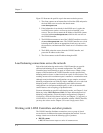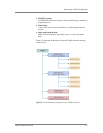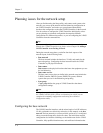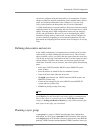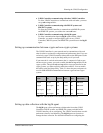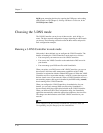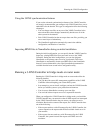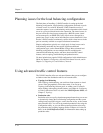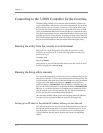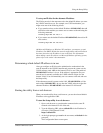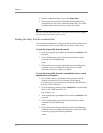
Chapter 2
2 - 12
Planning issues for the load balancing configuration
The final phase of installing a 3-DNS Controller is setting up the load
balancing configuration. Load balancing configurations are based on pools
of virtual servers in a wide IP. When the 3-DNS Controller receives a
connection request, it uses a load balancing mode to determine which virtual
server in a given pool should receive the connection. The virtual servers in
the pool can be the virtual servers managed by a BIG-IP system, virtual
servers managed by an EDGE-FX Cache, virtual servers managed by a
generic host server, or they can be individual host servers themselves. Note
that the 3-DNS Controller continuously verifies which virtual servers in the
pool are currently available to accept load balanced connections.
Simple configurations typically use a single pool of virtual servers and a
load balancing mode that does not require significant additional
configuration steps, such as Round Robin or Hops. More advanced load
balancing configurations can use multiple wide IPs, multiple pools,
customized load balancing modes, and other advanced traffic control
features, such as topology load balancing and production rules.
We have included two popular 3-DNS configurations in this Administrator
Guide, in Chapter 6, Configuring a Globally-Distributed Network, and in
Chapter 7, Configuring a Content Delivery Network.
Using advanced traffic control features
The 3-DNS Controller offers two advanced features that you can configure
to further control the distribution and flow of network traffic.
◆ Topology load balancing
With Topology load balancing, you can direct client requests to virtual
servers in the geographically closest data center. You can set up
Topology load balancing between pools, or within a pool. For details
about working with topology-based features, see Chapter 6, Configuring
a Globally-Distributed Network, and in the 3-DNS Reference Guide, see
Chapter 3, Topology.
◆ Production rules
Production rules are a policy-based management feature that you can use
to dynamically change the load balancing configuration and the system
settings based on specific triggers, such as the time of day, or the current
network traffic flow. You can set up standard production rules using the
Configuration utility, or you can define custom production rules using
the production rules scripting language. Refer to Chapter 4, Production
Rules, in the 3-DNS Reference Guide, for information about setting up
production rules.



